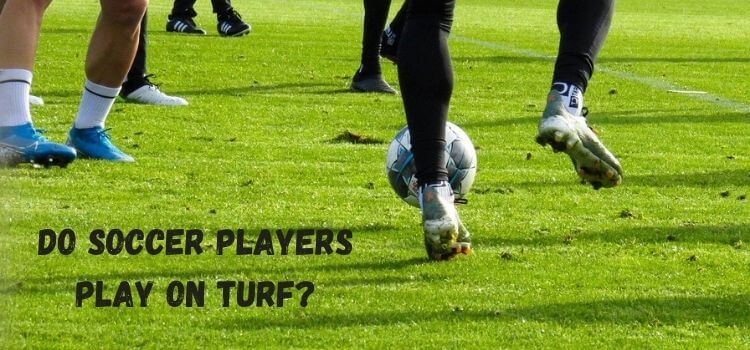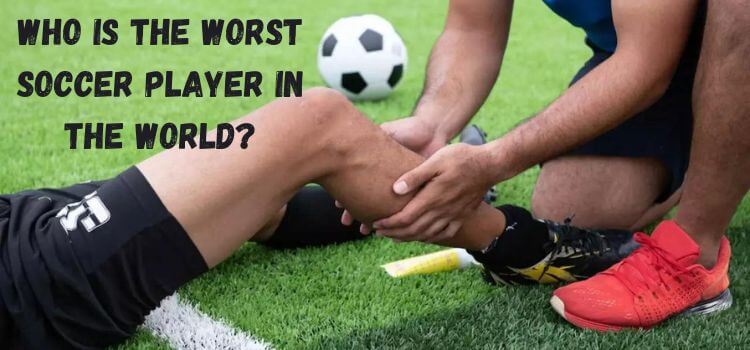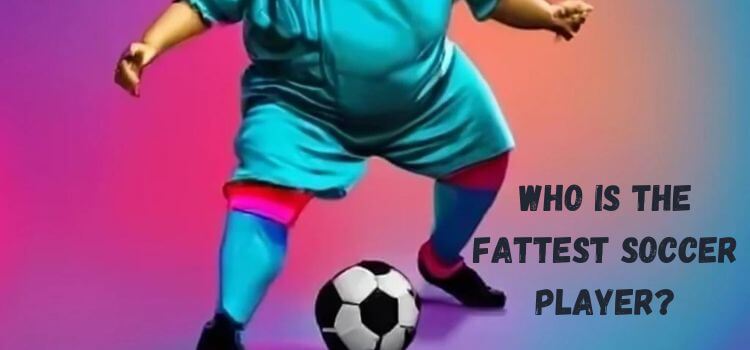As an Amazon Associate, I earn from qualifying purchases
In soccer, one might wonder about the surfaces upon which the beautiful game is played. Traditionally, soccer has been associated with natural grass fields, but artificial turf has become increasingly prevalent in recent years. This article delves into the question: do soccer players play on turf?

Introduction to Turf in Soccer
Turf, also known as artificial turf or synthetic grass, is a surface made of synthetic fibres designed to mimic the look and feel of natural grass.
Initially developed as an alternative playing surface for areas with harsh climates or heavy usage, turf has now found its way into many professional soccer stadiums worldwide.
Advantages of Playing on Turf
Durability and Consistency
One of the primary advantages of turf is its durability. Unlike natural grass, which can become worn and uneven over time, turf offers a consistent playing surface throughout the season. This consistency is particularly beneficial in areas with extreme weather conditions.
Weather Resistance
Turf is also more resistant to adverse weather conditions such as rain or snow. While natural grass fields can become muddy and slippery in inclement weather, turf remains playable, reducing the likelihood of match cancellations or delays.
Lower Maintenance Costs
Maintaining natural grass fields requires significant resources, including regular mowing, watering, and fertilizing. In contrast, turf requires minimal maintenance, lowering long-term costs for stadiums and clubs.
Disadvantages of Playing on Turf
Increased Risk of Injury
Despite its benefits, turf has been associated with a higher risk of specific injuries, particularly non-contact injuries such as muscle strains and ligament tears. The firmer turf surface can stress players’ joints, increasing the likelihood of injury.
Ball Movement Differences
How the ball interacts with the turf’s surface differs from natural grass, affecting its movement and bounce. Some players find it challenging to adjust to these differences, leading to altered playing styles and strategies.
Player Preference
Many soccer players prefer playing on natural grass, citing its comfort and familiarity. Some players may avoid matches or tournaments held on turf whenever possible due to personal preferences or concerns about injury risk.
Professional Soccer and Turf
FIFA’s Regulations on Turf
FIFA, the governing body of international soccer, has established regulations regarding using turf in professional matches.
While FIFA permits matches to be played on turf under certain conditions, including specific performance standards and player safety measures, the preference is generally for natural grass surfaces.
Major Tournaments Held on Turf
Despite FIFA’s preference for natural grass, several significant tournaments, including the FIFA Women’s World Cup and various UEFA competitions, have been hosted on turf surfaces.
While controversial, these decisions reflect the growing acceptance of turf in professional soccer.
Impact of Turf on Player Performance
Studies and Research on the Subject
Numerous studies have been conducted to evaluate the impact of turf on player performance and injury rates. While findings vary, some research suggests a higher incidence of specific injuries on turf compared to natural grass.
Players’ Opinions and Experiences
The opinions of professional soccer players regarding turf vary widely. Some players adapt seamlessly to turf surfaces and have positive experiences, while others express concerns about its impact on their performance and well-being.
Player Safety Concerns
Common Injuries Associated with Turf
Injuries commonly associated with playing on turf include ACL tears, ankle sprains, and turf burns. The firmer surface and increased turf friction can exacerbate the severity of these injuries compared to natural grass.
Mitigation Strategies
To address safety concerns, stadium operators and sports organizations have implemented various mitigation strategies, such as using advanced turf technologies, improving field maintenance practices, and providing appropriate footwear for players.
Turf vs. Natural Grass Debate
Environmental Impact
The debate between turf and natural grass extends beyond player performance and safety, including environmental considerations.
While turf eliminates the need for water and pesticides, it raises concerns about its ecological footprint, including its disposal and potential contribution to microplastic pollution.
Economic Considerations
From a financial perspective, the choice between turf and natural grass depends on installation costs, maintenance expenses, and long-term sustainability. While turf may offer initial cost savings, the total cost of ownership over time must be carefully weighed.
Community Preference
The decision to install turf or maintain natural grass fields often sparks debate within communities, with stakeholders weighing the benefits of each option against local preferences and priorities.
Community input and engagement are essential in determining the most suitable playing surfaces for soccer facilities.
Technology Advancements in Turf
Evolution of Artificial Turf
Advancements in turf technology have led to the development of more sophisticated playing surfaces that closely resemble natural grass in look and feel.
Modern turf systems incorporate shock absorption, drainage capabilities, and customizable infill materials to enhance player comfort and safety.
Innovations to Address Player Concerns
In response to player concerns about injury risk and performance differences, turf manufacturers continue to innovate and refine their products.
These advancements aim to mitigate the drawbacks associated with traditional turf surfaces, from softer fibres to improved infill materials.
Future Trends in Soccer Turf
Potential Improvements
The future of soccer turf holds promise for further performance, safety, and sustainability improvements. Ongoing research and development efforts seek to address existing challenges and push the boundaries of what is possible in synthetic playing surfaces.
Adoption Rates in Lower-Level Leagues
While professional soccer leagues may have the resources to invest in state-of-the-art turf systems, lower-level leagues and community organizations often need more money.
However, as the technology becomes more accessible and cost-effective, we can expect to see increased adoption of turf at all levels of the game.
Conclusion: Soccer Players Play on Turf
In conclusion, whether soccer players play on turf is multifaceted, with considerations ranging from performance and safety to environmental and economic factors. While turf offers certain advantages such as durability and weather
Read Our More Articles
- How Many Players Are on a Youth Soccer Team? An In-Depth Look
- How Many Players on Soccer Field for U12? Get the Facts Here!
- How Many Players on Soccer Field for U10: Comprehensive Guide
As an Amazon Associate, I earn from qualifying purchases


